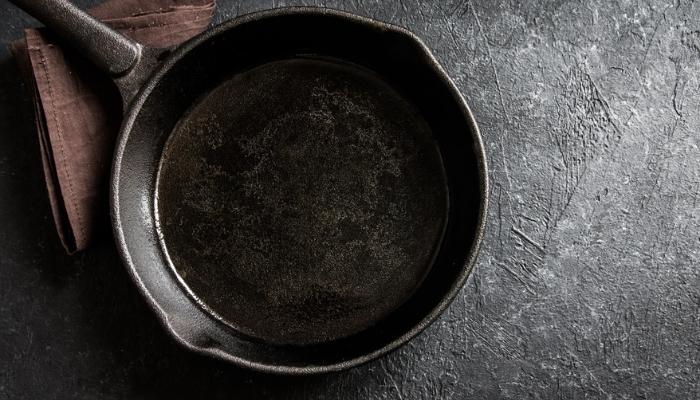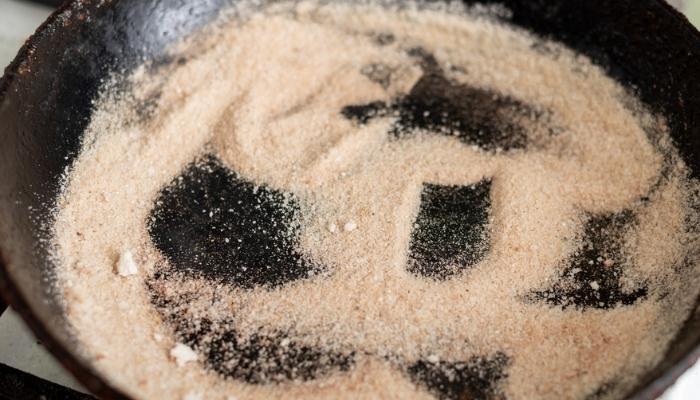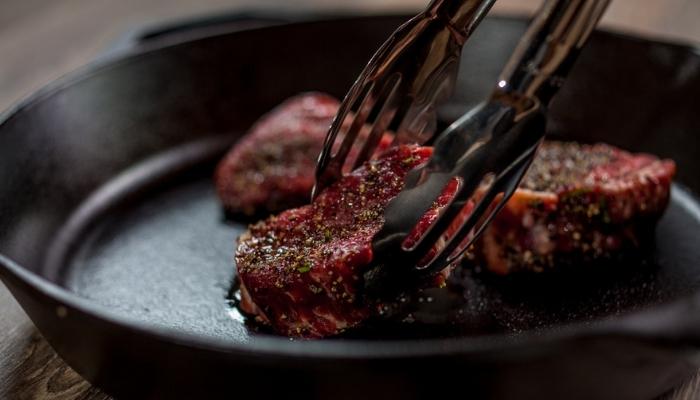A cast-iron skillet is one of the best kitchen accessories to have on hand for anyone who is serious about their home cooking skills. Its effectiveness is unmatched, and like some wines, the longer you keep it, the better it gets. Cast iron has two advantages for cookware: it consistently and evenly transfers heat, and when properly seasoned and cared for, it becomes naturally nonstick.
While some companies preseason their products, most home cooks do the seasoning themselves before using a cast-iron skillet. Here, we'll go over how to season this kind of pan and maintain this indispensable kitchen item throughout time.
1. What It Means to Season a Cast Iron Skillet
The process of seasoning involves baking a coating of protective oil into the surface of the cookware to increase its durability, heat output, and resistance to rust. This process is necessary for skillets and pans made of carbon steel and cast iron. When a skillet is seasoned or cured, a thin layer of carbonized oil or fat is transformed to increase its water resistance and stop food from sticking while it is being fried, roasted, or baked.

Every use strengthens this layer of protection, making good cast iron maintenance imperative. Without this barrier, the cast iron can rust from exposure to air, water, moisture from cooking, and other environmental factors. When done correctly, seasoning also adds flavor to food cooked in the skillet.
2. How to Season a Cast Iron Skillet
To get a seasoned cast iron, follow these steps:
- Use warm, soapy water to scrub the pan. Since you're getting ready to season the cookware, using soap is acceptable. Thoroughly rinse and hand dry.
- Coat the cookware with a very thin, even layer of cooking oil (inside and out).
- Insert the cookware upside-down in the oven. On the lowest rack, spread out a sizable baking sheet or some aluminum foil. Bake for one hour at 450–500 degrees Fahrenheit. Let it cool.
Once it's cooled, you can use it for cooking or store it away until your next meal. If food particles start to stick, rust appears, or you experience a metallic taste, re-season by following the same steps. And note if you use too much oil, your cookware may become sticky.

3. Best Way to Maintain Seasoning of a Cast Iron Skillet
The easiest way to keep a cast-iron skillet from losing its seasoning is to use it frequently. Another way to keep your cast-iron skillet in good condition is to clean and lightly season it regularly. After each use, wash the pan with warm water and mild dish soap. Avoid using harsh chemicals or scrubbing pads, as these can strip away the seasoning. Instead, gently scrub the pan with a soft brush or cloth. If there are any tough spots, you can use a little bit of coarse salt to help remove them.
Once you've washed the pan, dry it completely with a clean dish towel or paper towel. Alternatively, you can quickly dry your pan in two steps: wipe it with a paper towel or dish towel, set it on the stovetop over medium heat, and wait until all the moisture has evaporated. Then, apply a thin layer of oil to the pan's surface and heat it on the stove over low heat for about 10 minutes. Allow the pan to cool completely before storing it away. You may need to occasionally do a thorough re-season over time, particularly if you frequently cook items that are acidic in the skillet because they can wear down the seasoning.

4. What Is the Best Oil to Use to Season Cast Iron?
Cast iron cookware can be seasoned with any cooking oil or fat, but due to its accessibility, affordability, efficiency, and high smoke point, we advise using vegetable oil, melted shortening, or canola oil.
Lard was traditionally used to season cast iron, and while that practice is still acceptable, we do not suggest it unless you often use your cookware. Lard and other animal-based fats may go rancid if the cookware is stored for an extended period of time.
Whatever oil you decide to use, it's key to heat your pan to that oil's smoke point. When the oil reaches that smoking point, a chemical reaction called polymerization takes place, adhering the oil to your pan to form a natural seasoning layer.
Happy Cooking!

Now that you know how to get your cast iron skillet ready before dinner, it’s time to put it to use! Check out our blog for some fun recipes. And if your cast iron experience has opened your eyes to upgrade your stove needs, we can help you! Elders Appliance has everything you need to create the best at-home cooking experience for great tasty meals. Still have questions? Come in and talk to one of our experts today, or give us a call.